An Interview with Singapore’s Own Blade Runner
You have probably heard of Singapore’s very own Blade Runner, Mohammad Shariff Abdullah. While his South African counterpart, Blade Sprinter Oscar Pistorius, who specializes in the 100m, 200m and 400m races, inspired him to take up running, Singapore’s Blade Runner prefers longer distance races because of the challenges that come with these.
It is this very desire to take on new challenges and continuously push himself to his limits that inspired Shariff to compete in the 101km Craze Ultra race last year. Running 101km is an achievement for any able-bodied runner, let alone a runner with a prosthetic blade for a leg.
But Singapore’s Blade Runner, 44, isn’t done yet. In 2015, this inspirational speaker and athlete hopes to make a trip to Mount Everest to compete in the “world’s highest marathon.” The high altitudes will definitely pose a challenge in itself.
I caught up with Singapore Blade Runner Shariff to find out more about his latest running exploits and his passion for running.
I understand that you were born without a left foot. How have you coped with this?
I have had a lot of challenges. If you were born in 1968 without a left foot and not wearing a prosthetic one, people will call you bad names and throw stones at you. I was bullied a lot as a child, until 1975, when my father bought a prosthetic leg for me and the bullying stopped gradually.
When my father and foster mother passed away in the 1970s, life was very tough for me, as I was herded from one relative to another, but I managed to get married and also found work as a golf caddy, a cleaner and a security officer.
In 2008, there was pain on my left stump, so I had to have it amputated by another five inches, but this helped with the pain problem.
Inspired by Oscar Pistorius, I took up running in 2009 and became a marathoner.
Nowadays, I give talks to schools and organisations as a motivational speaker, in addition to my running.
How did Oscar Pistorius inspire you to take up running?
I saw a video of Oscar Pistorius in action. I told myself that if he can run, then I can too. So I changed my lifestyle and became an athlete.
Tell us about running with your prosthetic blade.
I started using it in 2009. It is made with carbon fibers and is like a spring, which goes up and down when I am running.
With the blade, pain on your stump nerve will come once in a while, but you cannot do much because those are dead nerves. Then if you run too much, you will lose weight and your stump will hurt. Also, with the humidity in Singapore, when I run, sometimes there’s too much sweat accumulating in my socket and that causes a lot of irritation. I may not be able to finish a race as a result, so I have to just stop and apply Vaseline. If the irritation is severe, I just stop completely. But if not, I can carry on running.
What is the biggest challenge that you have faced in running?
Actually, the Boston Marathon this year, because of the explosions. When I was running and reaching the end point, the explosions started. I was so scared. I was 800m away from the finish line then, when I heard the sound of the first explosion, then another one a few seconds later with people screaming and everyone running away. That was my toughest challenge because when I heard the first explosion, I did not know how to react. Things did not go according to plan and I had to walk all the way back to my hotel – I will never forget that marathon.
Do you do other sports besides running?
I go to the gym. I also play golf and I am a javelin thrower.
I also do rock climbing. There is no issue with climbing, because I use my hand to hold the rocks. My leg muscles are no issue either. My good leg moves around while my prosthetic leg supports me. My arms are the most important power in rock climbing. A lot of people think that for rock climbing, you must use legs, but it is the arm power that is the main thing, not the legs.
How do you feel about being an inspiration for many runners?
Everywhere I go, I ‘ve got so many fans! I have thousands of fans all over the world and everyone just supports me, so I am very happy! All my achievements just go to them. I want to inspire people as much as possible.
I understand that you will be attempting the Everest Marathon in 2015. Tell us about this.
You have to firstly climb Mount Everest over rough mountain trails, stay for a few days and then run all the way down.
I do not know how they split up the distance, but I know the total is 42km. So I have been trekking and going to the gym and climbing mountains in Malaysia. I have to go to Sabah often to train too, because it has got good mountains there for training.
The total trip will cost me $50,000 and so far, I have only raised $1,000. So that is why I am looking for extra money for this event.
Being so focused on running, how do you manage to fit in other activities into your life?
Recently, I have been very busy with lots of activities. So I must be strict with my time. Sometimes people may see me and want to talk to me on the spot. But they must make an appointment with me because of my training regime. I am a professional runner, so I have a schedule to adhere to. Punctuality is also important to me, because I need to balance my time well.
How do you run and cope with fasting during Ramadan?
You cannot say you are tired. As a Muslim, you have to carry on with your duty. I do my five daily prayers and fasting and I sleep around 10pm. So I have to go home early because the latest I sleep is around 11pm. I have to wake up at 2am to do a special prayer and then catch a couple hours sleep before I wake up at 4am again for my morning meal. After eating, I do not sleep, as I need to do prayers again. After that, I will go out and do some exercise, for example, maybe one hour of brisk walking. After that, I go home and rest or go out for another appointment. I may do school talks after that and then go home to rest a bit more.
I understand that you cut down on training during Ramadan?
Yes, but I am lifting extra weights to make up for that though and this month, I am not feeling very well, but no matter what, I must do training because I have races coming up soon. But during Hari Raya I must maintain myself and do not eat too much unhealthy foods. After Hari Raya, I will go all out and will do more intensive training programmes
What is your favourite distance to run?
My favourite is actually the full marathon because as long as you finish strongly, you can do it in about three and a half hours. I like this challenge because when you reach the 5km mark, you think you have achieved something. When you have reached 10km, you want to carry on and do more. At 21km, you say to yourself that you have done half a marathon and at 30km, you push yourself to the finishing line. It is the mind over matter feeling that I really like about the marathon.
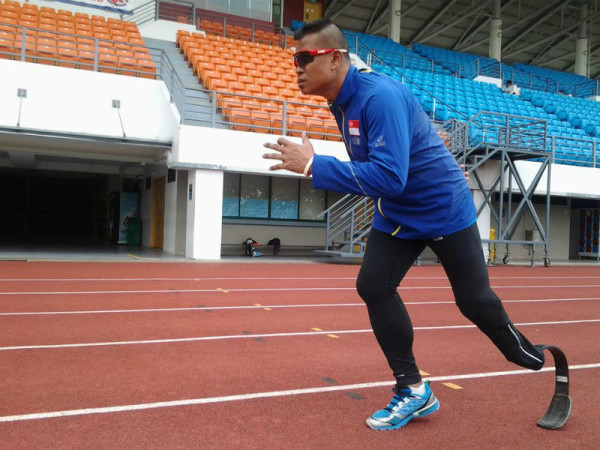 What type of terrain do you prefer for your training?
What type of terrain do you prefer for your training?
I prefer going uphill and downhill on the trails, because it is a type of endurance training. So for on-the-ground races, it becomes easier for you and you get very fast at running.
What distance do you usually run and why?
At the moment, I am with Superlympics, a global non-profit programme, which helps to improve the lives of the mobility-impaired through sport. These athletes compete every month in the 10km category for prizes (first prize – $1,000; second prize – $500 and third prize – $100) so I run in 10km races, because I am involved with Superlympics – which is my rice bowl.
What are some of the most recent races you have taken part in?
This year, I have completed in a number of races. One is the 2013 Boston marathon – yes, the one that had the explosions.
I also did the Brunei half marathon and the Sundown marathon (both the half and the full marathon races), which is challenging because you run 21km on a Friday night and then 42km again on Saturday – the next evening.
How have you been doing in races? What is your personal best?
For the full marathon, I do it in about six hours and at times, it can be five and a half hours. For 21km, it is sub-two hours, depending on the weather.
What’s the longest race that you have competed in?
The Craze Ultra 101km run in Singapore last year and in September, I am coming back again to do the race.
How did you run 101km – on your first attempt?
Last year when I ran the 101, I had media coverage, so I had to reach the first 32km media station at a specific time frame. After taking a break, I carried on to reach the 50km mark. After this, I found it much tougher because it was really hot and also quite boring. You cannot see much so you just run and when you turn back, you face other problems because it is night time then, and you have to use the headlamps to run and there’s dogs everywhere too. When I reached 70km at Sembawang Road, I was feeling quite happy because there were only 30km left to go, so I kept pushing myself and completed it in 25 hours.
Any tips that you may have for those new to running?
Yes. I would tell them to have a plan and think about their goal.
It is easy to run – just wear your shoes or even go barefoot if you want. But to be a serious runner, you must get involved in programmes that train you up and maybe help you to win some prize money. These programmes can be done online or with a coach.
Also, mix around with other runners and talk to them. Do not be shy.
Once you get the experience of running, upgrade yourself. Start with a 5km run, then 10km and 15km ones and progress to 21km runs. In your first year, take note of every run. It must have a post-mortem report. You need to read your reports and think about how to improve, for example, mistakes done. In the next year you improve your timing on the first year, which is just spent getting used to running, nothing else.
More on Singapore Blade Runner
Singapore Blade Runner returns to Boston Marathon bombings
Singapore Blade Runner to take on Everest Marathon
Conquering your Dreams by the Singapore Blade Runner
Readers can get in touch with Singapore Blade Runner at: http://sbr-quest-for-everest.blogspot.sg/ and make donations to his Everest Marathon attempt.
Find out more about Singapore’s top female runner here!

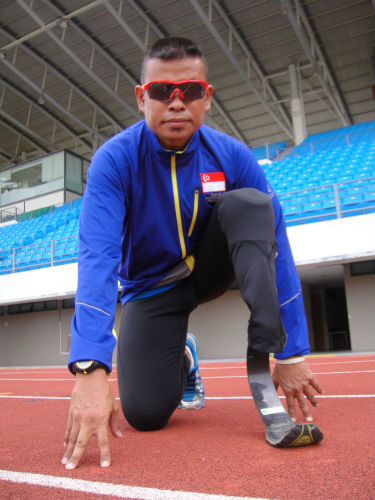
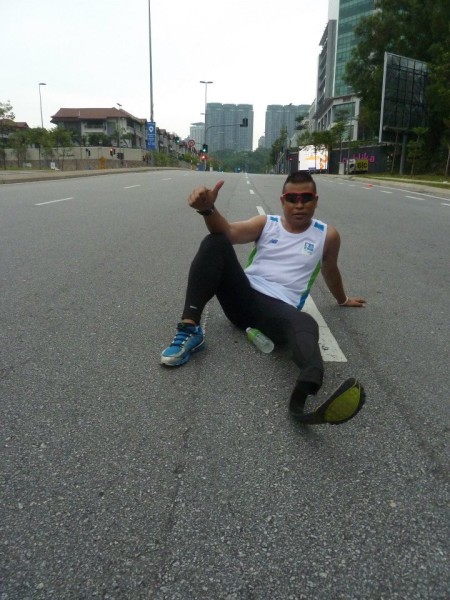
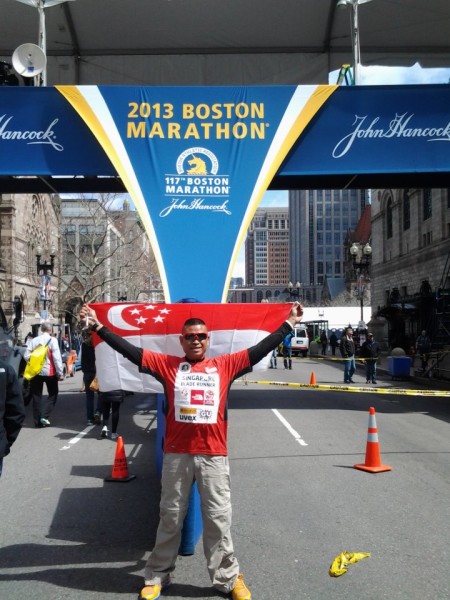
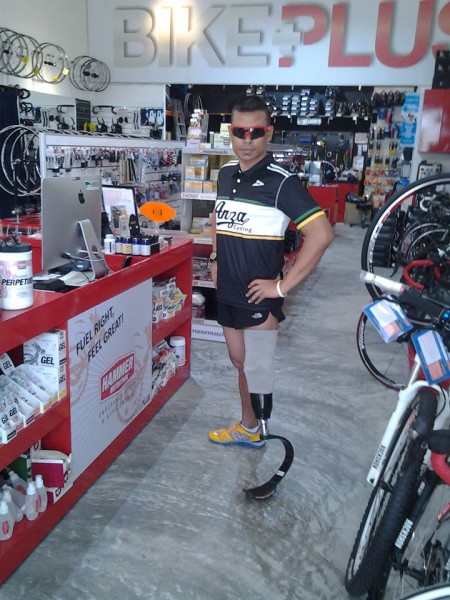
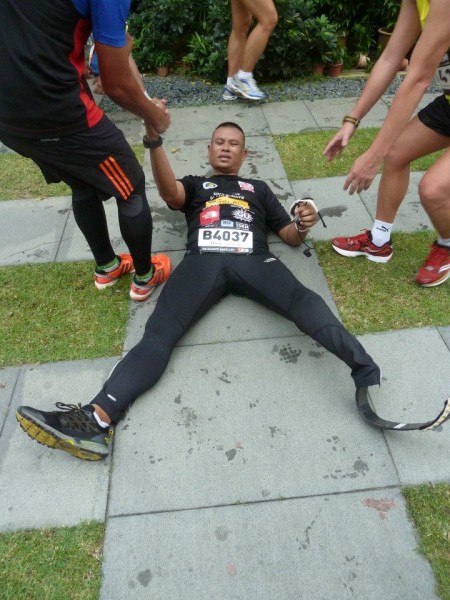
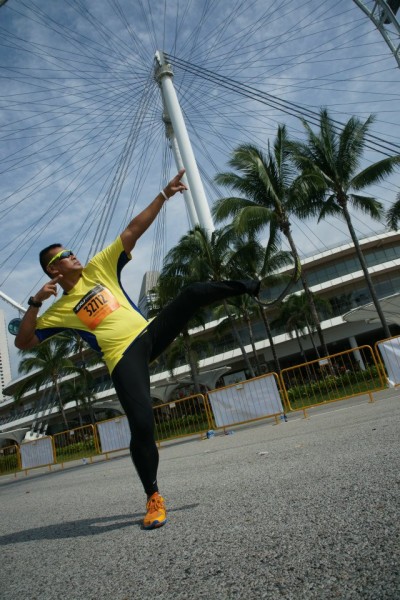
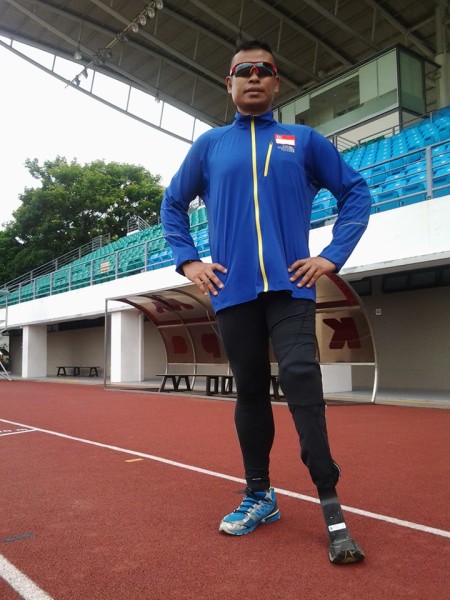
This interview was good. You covered many aspects. Well done.
Thanks, glad that you enjoyed reading the interview